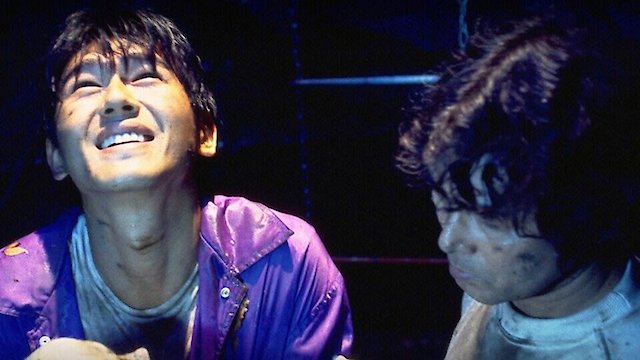
Ring: Kanzenban
Where to Watch Ring: Kanzenban

Ring: Kanzenban, released in 1995, is a chilling Japanese horror movie rooted in the genre's enduring focus on supernatural elements and psychological narrative. This movie, which precedes the popular 2002 American reimagining, was directed by Hideki Takayama, and features the talents of actors Katsunori Takahashi, Ayane Miura, and Mai Tachihara.
The central premise of Ring: Kanzenban offers an unforgiving look into a world where the boundaries between the real and supernatural become uncannily blurred. The narrative weaves together elements of a suspenseful thriller with an eerie supernatural tapestry, providing audiences with an edge-of-the-seat experience directly derived from Koji Suzuki's bestselling novel, "Ring."
Ring: Kanzenban stars actor Katsunori Takahashi in the world of investigative journalism. He plays a tenacious reporter on the hunt for an unusual story: mysterious videotapes purported to place a deadly curse on anyone who views them. His portrayal conveys a palpable sense of dread and determination, blending realism with the movie's supernatural elements skillfully.
Co-actor, Ayane Miura, artists as Takahashi's ex-wife in the film, providing a secondary narrative voice and crucial support for the investigation. Her portrayal of the strained relationship with Takahashi's character and her role in the plot highlight the movie's focus on human connections and reactions to inexplicable events.
Mai Tachihara, another pivotal character in Ring: Kanzenban, plays the couple's daughter. Her innocence and naivety offer a stark contrast to the dark, unsettling plot unfolding around her, and her performance adds a layer of tangible vulnerability to the movie.
Ring: Kanzenban eschews the typical jump-scare approach of many Western horrors. Instead, it delves deep into a slow-burning narrative that gradually builds tension and amplifies the sense of dread. The movie employs psychological intrigue and opaque mystery tied to our fear of the unknown. This atmospheric storytelling, coupled with the eerie soundtrack and haunting visuals, evoke an inescapable feeling of terror that lingers long after the movie ends.
The film's direction deserves particular attention; Hideki Takayama orchestrates an ever-present sense of horror which soars beyond identifiable threats. Integrating strategic camerawork, evocative lighting, and careful pacing, Takayama guides audiences along the uncomfortable journey of Takahashi's character, skillfully manipulating suspense, mystery, and terror.
The screenplay based on Suzuki's novel stays faithful to the source's rich atmosphere and deep psychological themes. It delves into the eerie mystery surrounding the cursed videotape, the intriguing pursuit of its origin, and the frantic quest to break the curse. Amid these supernatural elements, the underlying narrative examines themes of familial bonds, personal guilt, and the tension between modern technology and traditional beliefs, all woven seamlessly into the plot.
In terms of production design, Ring: Kanzenban showcases a striking contrast between the urban landscape and the antiquated, rural parts of Japan. The production team's meticulous attention to detail enhances the movie's overall atmospheric allure. The film's visuals achieve a distinctive balance between the common and the uncanny, transforming everyday objects into potent symbols of horror.
The soundtrack further contributes to the eerie atmosphere of the film. The chilling use of silence punctuated by sudden spine-chilling sounds amplifies anxiety and dread. The minimalist score's eerie melodies perfectly encapsulate the suspenseful nature of this horror classic.
Overall, Ring: Kanzenban is a testament to the horror genre's potential. It showcases the power of understated terror, which relies on mood, atmosphere, and psychological unease rather than explicit violence or gore. Through its nuanced characters, carefully-paced narrative, and proficient direction, it sets an impressive precedent for other horror films to come. This film is a must-see for those seeking a psychological horror experience that truly lingers. The movie typifies the power of horror aesthetics, cementing its status as an enduring classic in the pantheon of Japanese horror cinema.
Ring: Kanzenban is a Horror, TV Movie, Mystery movie released in 1995. It has a runtime of 95 min. Critics and viewers have rated it moderate reviews, with an IMDb score of 6.3..
